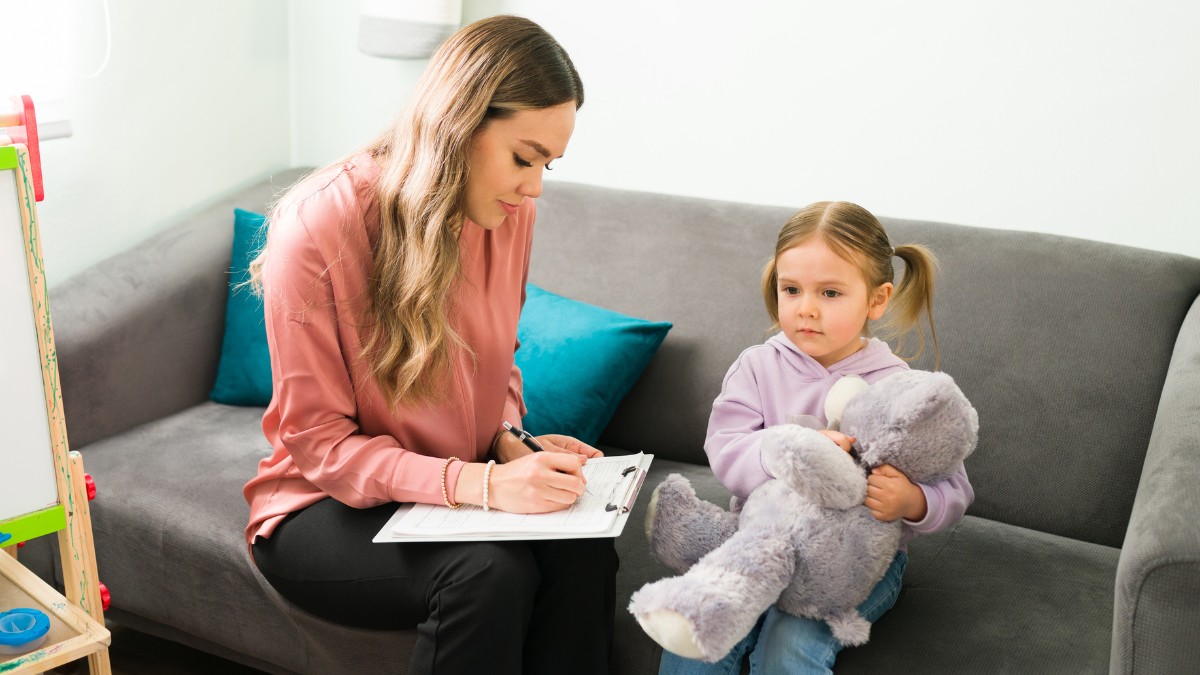Key Points:
- In-home ABA therapy provides personalized support within your child’s natural environment, improving skill generalization.
- Choosing the right provider involves understanding service models, therapist qualifications, and family involvement.
- Consistency, flexibility, and parent training are crucial to making home-based ABA effective.
Finding the right support for your child with autism is deeply personal—and when it comes to therapy, the setting matters just as much as the services. That’s where in-home ABA therapy in Maryland comes in. ABA therapy providers in Maryland, like us at Steady Steps, understand how important it is to bring meaningful learning into the environment where your child feels safest: home.
This guide breaks down what every parent should know about in-home ABA, from how it works and what to expect, to how to choose the right provider and set your family up for success. Whether you’re just starting your search or looking to switch to a more personalized approach, this article gives you a complete look at what in-home ABA therapy can offer.
What Is In-Home ABA Therapy?
ABA (Applied Behavior Analysis) is a well-established therapy used to teach new skills, reduce challenging behaviors, and improve communication and independence in individuals with autism. In-home ABA therapy delivers this support right where your child lives, learns, and interacts with family—no need to travel to a clinic or office.
By working in your home environment, therapy sessions can naturally incorporate household routines, preferred toys, siblings, pets, and real-life situations. For many kids, this leads to quicker progress and better generalization of skills.
At Steady Steps, we’ve seen how in-home ABA creates more relaxed, relevant learning experiences that stick.
Why Families Choose In-Home ABA Therapy
Deciding between clinic-based and in-home ABA therapy can feel tricky. But many families lean toward in-home care because it offers unique benefits that can be harder to replicate in a clinic.
Let’s take a closer look:
1. Familiar Environment
Learning happens best when children feel safe. In-home ABA therapy allows your child to build skills in a place they know well, which can reduce anxiety and improve focus during sessions.
2. Real-Life Skill Building
Daily routines like brushing teeth, getting dressed, mealtime, and bedtime can become part of therapy goals. This increases the chances your child will actually use what they learn.
3. More Family Involvement
When sessions happen in your home, it’s easier for parents, siblings, and caregivers to be included. You can observe therapy, ask questions in real-time, and even get coached on how to apply strategies outside of sessions.
4. Flexibility With Schedules
In-home sessions often offer more flexibility with timing, making it easier to work around school, naps, or parent work schedules.
What to Expect During In-Home ABA Sessions
Understanding what happens during sessions can help ease worries and ensure the experience is productive.
In general, in-home ABA therapy follows a structure, even though it feels more natural than a clinic setting:
- Initial Assessment: A Board Certified Behavior Analyst (BCBA) visits your home, observes your child, interviews you, and develops a customized therapy plan based on your child’s current abilities and needs.
- Goal Setting: These goals might include communication, reducing challenging behaviors, increasing independence with tasks, improving play skills, or learning safety rules.
- Therapist Sessions: A trained RBT (Registered Behavior Technician) carries out the therapy sessions under supervision from the BCBA. They work one-on-one with your child, using reinforcement and evidence-based techniques to teach target skills.
- Daily Data Collection: Progress is tracked every session. Therapists document what worked, what didn’t, and how your child responded to different strategies.
- Parent Training: This is a key part of in-home therapy. Parents are guided on how to support learning between sessions using the same methods and language the therapist uses.
We follow this structure at Steady Steps because consistency is the foundation of real progress—and keeping parents in the loop helps us stay aligned.
Questions to Ask Before Choosing an In-Home ABA Provider
Not all providers approach in-home therapy the same way. Asking the right questions can make sure your child gets the support they deserve.
Here are key questions—and what to listen for in the answers:
1. Who Will Be Providing the Therapy?
- Make sure BCBAs and RBTs are licensed and experienced with in-home settings.
- Ask whether you’ll have the same therapist consistently.
- Ask how often the BCBA will check in and observe sessions.
2. How Do You Personalize Treatment Plans?
- Look for providers that include family routines, parent goals, and real-life challenges in the therapy plan.
- Ask how often plans are reviewed and updated based on progress.
3. What Kind of Parent Training Do You Offer?
- Parent coaching should be scheduled regularly, not just offered “if needed.”
- Ask what kind of skills you’ll be taught and how you’ll be supported.
4. How Do You Handle Challenging Behaviors in the Home?
- The provider should use function-based strategies rooted in reinforcement—not punishment.
- Look for proactive strategies and plans that are easy to follow.
5. What Happens If a Therapist Can’t Make It?
- Ask about cancellation policies, makeup sessions, and how communication is handled.
Choosing the right provider means finding a team that’s skilled and easy to collaborate with. At Steady Steps, we value transparency, consistency, and real family partnerships.
 How to Prepare Your Home for ABA Therapy
How to Prepare Your Home for ABA Therapy
In-home therapy doesn’t require a huge renovation—but a little planning goes a long way in creating a successful setup.
Here’s what can help:
- Choose a Consistent Therapy Space
It doesn’t have to be fancy. A small corner in the living room or a quiet bedroom with a table and a few toys works great. Consistency helps the child know it’s “therapy time.”
- Have Reinforcers Ready
Therapists usually bring preferred items, but they may also use snacks, toys, or activities your child already loves. Share what motivates your child.
- Minimize Distractions
Turn off TVs and limit background noise when possible. Siblings can be nearby, but having a quiet space can help with learning new skills.
- Be Available, If Possible
Even just being nearby can help therapists check in with you during breaks or transitions. It also gives you a chance to observe and learn.
Is In-Home ABA Therapy Right for Every Child?
While in-home ABA is a great option for many families, it isn’t perfect for everyone. Some kids benefit from the structure of a clinic, especially if they need exposure to peer interaction or if home has too many distractions.
In-home ABA therapy is especially effective for:
- Children who struggle with transitions or new environments.
- Families needing flexibility due to work or school schedules.
- Goals centered around daily routines like meals, hygiene, or bedtime.
- Parents who want to be closely involved in therapy.
Ultimately, the right setting depends on your child’s needs—and your family’s capacity to support therapy at home. When in doubt, a good provider will guide you based on assessment outcomes and your goals, while also helping you navigate available supports, understand your child’s rights, and access autism-related services and resources in your community.
Common Misconceptions About In-Home ABA Therapy
We’ve heard plenty of concerns over the years, so let’s address a few common myths:
- “My house is too small.”
It’s not about space—it’s about consistency. Even a quiet corner can work.
- “I have other kids at home—it’ll be too chaotic.”
That’s part of life! Therapists are trained to work around everyday family dynamics.
- “It won’t be structured enough.”
Sessions follow clear goals, routines, and protocols—just within a more natural setting.
- “I won’t know what’s going on during sessions.”
With in-home therapy, you actually have more visibility and access to ask questions or observe.
If you’ve been on the fence, know that many families find in-home ABA to be more adaptable, intimate, and effective than they expected.
Wrapping It Up: Real Life Happens at Home
ABA therapy works best when it’s consistent, individualized, and connected to the child’s real world. That’s why in-home ABA therapy in Maryland is such a valuable option for many families. It offers convenience without sacrificing quality—and brings learning right into the spaces where your child lives, plays, and grows.
At Steady Steps, we’re committed to making ABA feel less like a program and more like a natural part of your life. We come to your home ready to collaborate, problem-solve, and celebrate wins—big and small—with you.
Get in touch today to learn more about ABA therapy in Maryland and how in-home sessions can support your child’s development right where it matters most.



